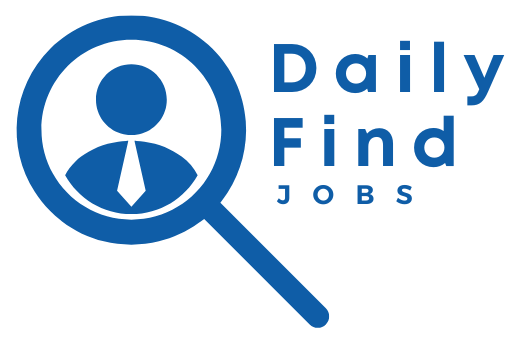Searching for a new job can be challenging, but knowing the best time to look can significantly boost your chances of landing your dream position. Industry experts suggest that timing, market trends, and strategic preparation play crucial roles in the job-hunting process. By learning about seasonal hiring patterns and preparing effectively, you can navigate the job market more efficiently and secure the best opportunities available. Whether you are looking for a new career path or aiming to advance in your current field, understanding when to apply is key.
Why Timing Matters in Job Search
In the dynamic landscape of job hunting, timing plays a crucial role in determining your success. The job market is remarkably fluid, and understanding its rhythms can give you a competitive edge. Different periods of the year bring varying levels of opportunity. Recognizing these patterns allows you to fine-tune your job search strategy effectively.
Employers often follow annual cycles that influence when they post new positions. For instance, the start of the fiscal year might bring budget expansions, leading to increased recruitment. Conversely, towards the year’s end, companies might slow down their hiring processes due to holiday seasons or budget constraints.
Recognizing these trends is vital for job seekers targeting industries with noticeable seasonal variations. For example, retail may ramp up hiring ahead of the holiday season, whereas tech companies might align recruitment with new project launches or fiscal planning. By aligning your applications with these cycles, you enhance your visibility as a timely candidate.
Moreover, job seekers must assess competition levels throughout the year. During popular hiring months, like January or September, you may face increased competition. Conversely, applying during less competitive periods might increase your chances of standing out.
Learning to navigate this timeline effectively involves researching your target industry, understanding its specific hiring cycles, and adjusting your job search plan accordingly. Your strategy should not only focus on when jobs are posted but also anticipate periods of lesser activity when preparing and refining applications could be beneficial.
Seasonal Trends in Hiring
Throughout the calendar year, hiring practices shift due to various seasonal trends. Understanding these patterns can significantly impact your job search strategy. For instance, at the beginning of the year, many companies receive new budgets and are eager to fill positions left vacant after the holidays. This period can see a surge in job openings across industries.
In contrast, summer months might witness a slowdown in hiring, as key decision-makers go on vacations. However, this could be an opportune moment for temporary or part-time summer jobs, particularly within hospitality and tourism sectors. Towards the end of the year, hiring might again slow down as organizations close out their financials and prepare for the holiday season.
Industry-specific trends also play a role. For example, retailers ramp up their hiring in late summer for the upcoming holiday rush, while educational institutions generally hire in late spring and summer before fall sessions begin. Adapting your job search to these periods can increase your chances of landing suitable roles.
Best Months to Apply for Jobs
When searching for a new job, timing can be crucial. One of the most critical aspects to consider is the best months to apply for jobs. Understanding seasonal trends in hiring can give you a significant advantage.
January and February are often considered top months for job seekers. Companies start the new year with new budgets, translating to more openings. Hiring managers are eager to fill positions that were left vacant from the previous year.
In March and April, the job market remains robust. Spring is a busy hiring period as employers focus on preparing for summer activities. However, competition may increase, so it’s essential to stand out during these months.
During May and June, opportunities might still be available, especially in industries like retail and tourism. These sectors often ramp up for summer, creating openings and temporary seasonal positions.
Come July and August, things might slow down slightly since many decision-makers take vacations, reducing available opportunities. Yet, it’s a good time to prepare your application materials for the next hiring wave.
In September and October, the job market picks up once more. Many businesses aim to finalize their hires before the holiday season and budget planning period at year-end. It’s an excellent time to push applications forward.
Finally, November and December could be slower due to the holiday period, but they are not devoid of opportunities. Networking events related to the holidays can pave the way for future connections and referrals.
Recognizing the best months to apply is essential. It helps you time your applications strategically, maximizing the chances of landing the ideal role. Consider the industry’s unique cycles to best approach your job search.
Preparing for the Job Hunt
Research Potential Employers: Start by exploring companies that align with your skills and interests. Use online resources like LinkedIn, Glassdoor, and company websites to gather insights about their work culture, values, and recent projects.
Update Your Resume and Cover Letter: Tailor your resume and cover letter to highlight achievements and skills that are most relevant to your desired job. Ensure the format is clean and professional.
Build Your Online Presence: Create or update your LinkedIn profile ensuring it reflects your current skills and experiences. Engage with relevant content, join industry groups, and connect with professionals in your field.
Prepare for Interview Questions: Practice common interview questions and answers. Consider both general questions and ones specific to your industry. Mock interviews with friends or mentors can be very helpful.
Learn About Industry Trends: Stay informed about the latest trends in your industry. This knowledge will help you during interviews and networking events.
Network with Professionals: Attend job fairs, workshops, or online webinars. Connecting with professionals can provide valuable information about job openings and company cultures.
Create a Job Search Plan: Set aside dedicated time each day for job searching activities. Be organized with a plan to manage job applications, track deadlines, and follow-ups.
Making the Most of Job Offers
Understanding how to make the most of job offers is essential in your career journey. During the times when you’ve identified the best months to apply, knowing how to handle job offers can significantly impact your success. Evaluating Offers: Consider what the offer entails beyond just the salary. Look into benefits, opportunities for growth, and the company culture. Understanding your priorities can help you make the best decision.
Negotiating Terms: Do not hesitate to negotiate for a better deal, whether it involves salary, work conditions, or benefits.
Research Comparisons
Look at similar positions in the industry to have a clear idea of what is feasible to negotiate.
Also, think long-term about how each offer aligns with your career goals. Accepting an offer that leads to professional development will create more opportunities in the future. Communicate Clearly: When responding to job offers, maintain a professional tone and clearly communicate your thoughts and acceptance, or questions about the offer.
Remember, taking the time to deeply understand job offers can set you up for a successful career path, especially when aligned with insights such as seasonal trends and timing in the job market.


